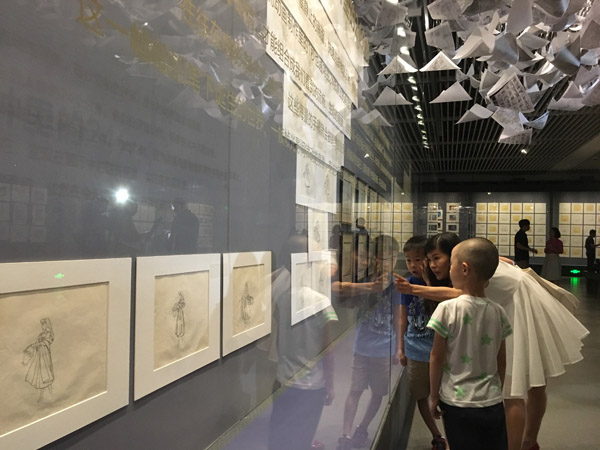 |
|
Visitors in front of the original scripts of the animation film Sleeping Beauty. [PHOTO BY WANG KAIHAO/CHINA DAILY] |
The Walt Disney Studios section of the exhibition, which covers from 1937 to 1995, demonstrates how the animators were able to create such colorful worlds out of simple pencil drawings.
Sketches of early images of Mickey Mouse show how the world's most famous rodent was born.
And popular animation films from Snow White and the Seven Dwarfs (1937), Pinocchio (1940), Bambi (1942), Alice in Wonderland (1951) and Peter Pan (1953), are among the kaleidoscopic selection of exhibits that reveal how the brilliant ideas in the minds of the animators vividly leapt onto paper to become globally recognized cultural icons.
Two stills on display-one from Alice in Wonderland (1951) and one from Lady and the Tramp (1955)-were even personally drawn by Walt Disney and bear the animation guru's signature, something that Cheng considers as rare.
One section of the exhibition hall has been decorated to recreate the style of a 1930s animation studio to provide visitors with a more "immersive" experience.
According to Cheng, the Walt Disney Studios pioneered the introduction of celluloid in the animation process to improve production efficiency. Animators would draw the scenes onto layers of disposable film placed over a static background-normally painted using watercolor.